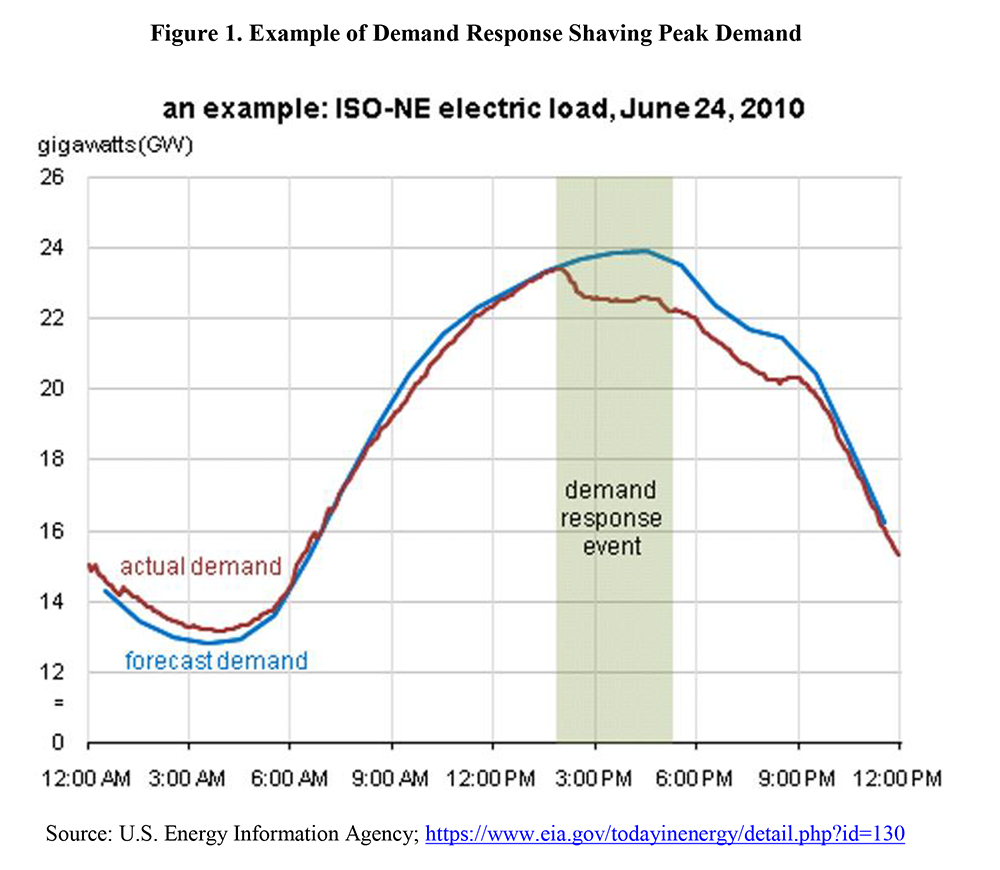
WILLIAM RAU
A climate crisis conundrum involves heatwaves, air conditioners, and blackouts. Air conditioning saves lives during heatwaves, but soaring AC demand can crash the grid and claim lives. Today, the top 20% of peak electricity demand involves the hottest 200 hours during our 8,760-hour year. That top 200 hours is the crux of the conundrum.
Rising AC demand is behind declining utility load factors. Load factor equals average load divided by peak load. Almost 70% in 1960, load factor is 50% or less today. That means a grid must be twice as large as one with constant electricity use across 24 hours. Our oversized grids drive up electricity costs.
Increasing heat and AC demand also degrade grid performance. Higher temperatures reduce gas and nuclear power plant efficiencies while increasing coal-fired plant outages. Five nuclear power plants closed during Europe’s 2018 heatwave and another eight reduced output because reactor “cooling” water became too hot. Coal-fired plants repeatedly tripped offline during Australia’s punishing 2017 heatwave. Next, electricity transmission drops because power lines lose capacity as temperatures become extreme. Third, heatwaves can induce transformer failures. California’s 2006 heatwave took out 2,000 transformers, left 1.2 million without power, and contributed to 650 heatwave deaths (Aivalioti 2015).
These grid issues offer context for the National Electricity Reliability Corporation’s (NERC) warnings about Illinois’ declining electricity reserves. One of our first responses to NERC’s warning should be to reduce peak summer demand.
First, Ameren can pay electricity customers to add air conditioners to voluntary demand-response networks. Participation gives the utility the right to briefly reduce participants’ electricity usage when demand spikes. These compensated reductions are barely noticeable as they round robin across thousands of participants. As Figure 1 shows reduction in peak demand can be substantial. That is why Portland General Electric (PGE) will meet 25% of its peak demand with demand response and solar + storage (March column). To equal PGE, Ameren would have to develop more than 400 megawatts of demand response and energy storage. The alternative? A major heatwave could force our grid operator to impose rolling blackouts on everyone.
Second, time-of-use electricity rates would help cut peaks. For example, PGE charges 20.4¢/KWh for peak (3-8PM) summer electricity and 4.1¢/KWh for off-peak (10PM-6AM) electricity. With an 80% reduction in cost, time-of-use rates create a powerful incentive to move demand from peak to off-peak. Rational electricity rates — higher prices when demand exceeds supply — will reduce peak demand.
Third, we can move some AC demand off peak with “ice batteries.” Chicago, with America’s largest district cooling system, has integrated more than 100 downtown buildings into a district containing five cooling plants. Plants use 3.7 ¢/KWh off-peak, ComEd electricity to freeze huge tanks of water. During peak hours, when ComEd charges 15.9 ¢/KWh, near-freezing water is piped to building air handlers that make “ice-cheap” cool air. These 100 buildings reduce peak demand by more than 30 megawatts, cut AC costs, and increase both building load factors and rentable space.
If you had to pay $4.00/gallon for gasoline from 3PM to 8PM, or 93¢/gallon after 10PM, when would you top off your tank? Create that scenario for electricity and customers will be tanking up on icy megawatts in the wee hours of the morning.
References
Aivalioti, Sofia. 2015 (Jan). Electricity Sector Adaptation to Heat Waves. Sabin Center: Columbia Law School; https://climate.law.columbia.edu/content/electricity-sector-adaptation-heat-waves
BAC. 2015 (Aug 14). Thermal Chicago District Cooling System. Baltimore Aircoil Company; https://www.youtube.com/watch?v=7IZ3PBr7dO4
DeBruler, Dennis. 2017 (Nov 30). Chicago District Cooling – Big Ice Machines. Industrial History; https://industrialscenery.blogspot.com/2017/11/chicago-district-cooling-big-ice.html
NREL. 2018. Thermal Energy Storage, the lowest cost storage. National Renewable Energy Lab; https://betterbuildingssolutioncenter.energy.gov/sites/default/files/slides/Thermal%20Energy%20Storage%2C%20The%20Lowest%20Cost%20Storage.pdf
Walton, Robert. 2021 (Oct 18). By 2030, Portland General sees distributed resources meeting up to 25% of peak demand. Utility Dive; https://www.utilitydive.com/news/by-2030-portland-general-sees-distributed-resources-meeting-up-to-25-of-p/608376/


Recent Comments